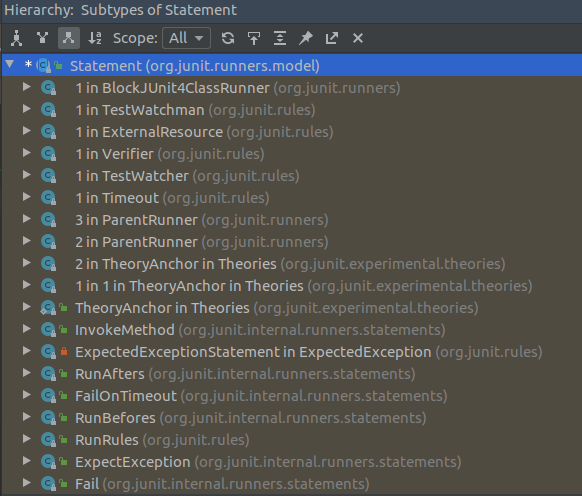1
2
3
4
5
6
7
8
9
10
11
12
13
14
15
16
17
18
19
20
21
22
23
24
25
26
27
28
29
30
31
32
33
34
35
| public class BlockJUnit4ClassRunner extends ParentRunner<FrameworkMethod> {
protected Statement methodBlock(final FrameworkMethod method) {
Object test;
try {
test = new ReflectiveCallable() {
@Override
protected Object runReflectiveCall() throws Throwable {
return createTest(method);
}
}.run();
} catch (Throwable e) {
return new Fail(e);
}
Statement statement = methodInvoker(method, test);
statement = possiblyExpectingExceptions(method, test, statement);
statement = withPotentialTimeout(method, test, statement);
statement = withBefores(method, test, statement);
statement = withAfters(method, test, statement);
statement = withRules(method, test, statement);
statement = withInterruptIsolation(statement);
return statement;
}
protected Statement withBefores(FrameworkMethod method, Object target, Statement statement) {
List<FrameworkMethod> befores = getTestClass().getAnnotatedMethods(Before.class);
return befores.isEmpty() ? statement : new RunBefores(statement, befores, target);
}
....
}
|

